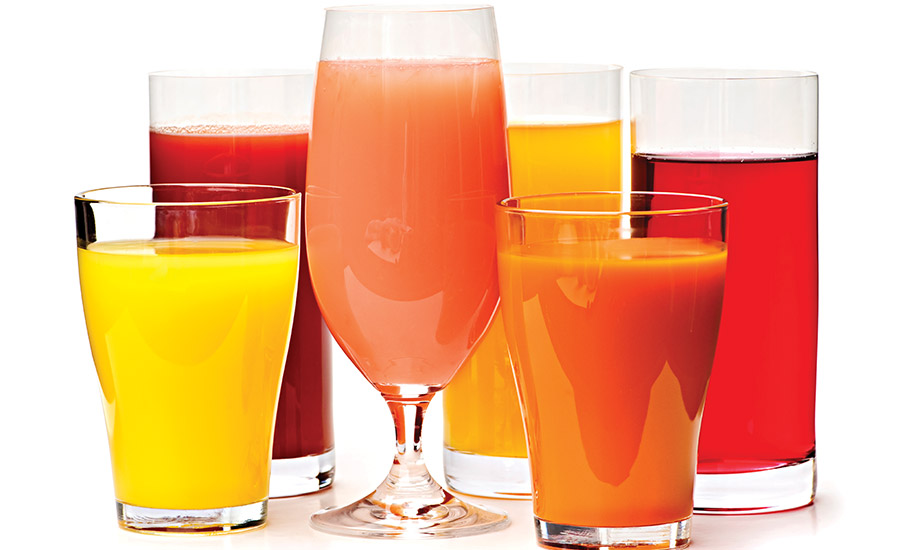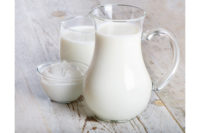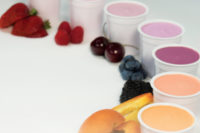Euromonitor data confirm what many of us already knew: Energy beverages are going gangbusters. Sales topped $11.1 billion and two billion liters in 2016.
But dairy processors could be forgiven for seeing a cloud behind the silver lining. You’d be hard-pressed to find many dairy-based drinks contributing to energy’s success. American shelves may boast of some 400-plus energy drinks from more than 200 different brands, but “the development of dairy-based energy drinks lags far behind these numbers,” said Jonathan Hopkinson of DuPont Nutrition & Health, New Century, Kan.
“By its nature, dairy is key to delivering energy,” said Denis Neville, CEO, CoreFX Ingredients,Chicago.
But for whatever reason, dairy brands have yet to take full advantage of the promise that dairy-based energy formulation represents. That may soon change, as this is one oversight that’s easy to rectify.
“Dairy is an ideal energy-delivery system,” Neville said. Fortifying it with ingredients to enhance that asset “only improves dairy’s overall energy profile.”
An eager, but tired, audience
According to Future Market Insights analysis, the audience for energy drinks looks ready to double by 2018. And among the drinks’ fans is a core of consumers that any dairy brand would be happy to claim: males between the ages of 18 and 34.
Suvash Kafley of Milk Specialties Global, Eden Prairie, Minn., said young men use most of the energy drinks, “and one-third of teens are consuming energy drinks, according to a recent NCCIH report.”
But they are not the only ones running a serious energy deficit and running to energy drinks for relief.
“Consumer research shows that about one-third of the U.S. population is concerned about fatigue and looking to enhance their energy throughout the day,” said Jon Peters, president, Beneo Inc., Morris Plains, N.J.
DuPont Nutrition & Health’s research found “tiredness” among the top-three health concerns cited across all consumer segments surveyed, said Hopkinson, DuPont’s senior applications scientist.
While Americans seek clean labels on their foods and beverages, many energy beverages struggle under the weight of an “inherently unnatural” reputation, Peters said.
That could slow growth in the energy drinks sector.
Clean energy
This is where dairy comes in. Thanks to its “natural and wholesome reputation, consumers who avoid energy drinks may find dairy-based energy products more appealing,” said Alison Raban, a certified food scientist with BI Nutraceuticals, Long Beach, Calif.
And where does dairy’s clean energy come from? Technically speaking, it comes from the bonds holding together the fat, carbohydrates and protein that are dairy’s macronutrients. These bonds are storage sites for dairy’s chemical energy, and digestion is ultimately a complex series of reactions that transfer chemical energy from the bonds to our cells, where it does the work of keeping us running.
“The molecules that most efficiently store this energy are fats and carbohydrates,” Hopkinson noted. And though fats store more energy per gram than do carbohydrates — 9 kcal for the former compared to 4 kcal for the latter — our bodies more easily and rapidly harvest carbohydrate energy, with glucose’s energy the most easily harvested of all.
While fat and protein are wholly legitimate energy sources, carbohydrates, Peters said, “play the most important role in the human diet, qualitatively and quantitatively.”
Smarter carbs
Yet, as we’re increasingly learning, all carbohydrates aren’t created equal. Thus a key consideration in choosing a carbohydrate for energy-beverage formulation “is just how fast the developer would like the consumer to feel the energy,” Hopkinson said.
This speed of energy release roughly translates to glycemic index, and high-GI sugars like glucose, at 100, yield their energy most rapidly, while low-GI options (like fructose, near the bottom at 15) mete it out more slowly.
Isomaltulose, a natural carbohydrate that Beneo derives from sugar beet, has a unique molecular structure that allows it to release its energy “in a steadier and more sustained way,” Peters said. Specifically, the bond linking the disaccharide’s glucose and fructose monomers “is much stronger,” as he put it, so the body digests it “fully yet slowly.”
With a low glycemic index, Beneo’s branded ingredient causes neither blood glucose nor insulin levels to spike or plummet, and its hardy molecular structure renders it highly process-stable in dairy, with almost no hydrolysis or browning, even in products subjected to UHT processing.
Stimulating discussion
But while consumers largely get the concept of caloric energy, this “is not what most people think of when you ask them about the relationship of food — especially energy beverages — to their own energy,” Hopkinson said. “They think about energy in terms of vitality, liveliness, spirit, enthusiasm. These are observational terms.”
The ability to observe that vitality is most pronounced following the ingestion of caffeine.
As Raban noted, “Coffee and tea, both caffeine-containing beverages, have been consumed by humans for millennia, and this has led to the widely known connection between caffeine and energy.”
But with caffeine, the feeling actually comports with the science, as the compound’s stimulant effects are well understood. In addition to being a stimulant, Hopkinson said, caffeine “causes our bodies to convert fat stores into glycogen, which is the carbohydrate that muscles use for energy. It also imitates epinephrine, the fight-or-flight hormone, causing many physiological effects, including increased heart rate, increased muscle tone and, again, greater availability of glycogen.”
The problem with caffeine, though, is that many conventional sources leave consumers with “jittery side effects,” Raban said, which may be why her team has “recently experienced a spike in interest in new forms and sources of caffeine. For beverage use, they offer several water-soluble botanical extracts containing the compound.
Scott Smith of Taiyo International, Minneapolis, wagers that dairy brands eager to enter the energy game may “have been hesitant to take on the negatives associated with traditional ingredients offered for energy.” His company’s solution is a whole green coffee powder.
Originally developed by GoBean USA (Taiyo partnered with GoBean and Wellington Foods in spring 2017 to be the product’s exclusive distributor), the ingredient is a whole unroasted bean that “delivers all the benefits of the coffee bean (not just caffeine) still bonded to the dietary fiber,” Smith explained. When digested, the powder delivers a slow, steady release of energy over five to six hours.
Labeled “whole green coffee beans,” the ingredient fits today’s clean-caffeine imperatives. The fine-mesh form can be used in dairy and juice applications with slight viscosity, and in smoothies, protein shakes and similar beverages, Smith said.
Protein-powered energy
Protein is a widely acknowledged energy source. While it may trail carbohydrates for easy energy access, protein (dairy protein in particular) is still “packed with beneficial nutrition,” said Kafley of Milk Specialties Global. Milk protein delivers all nine essential amino acids, while also conferring satiety and supporting muscle and bone health.
Nevertheless, he cautioned, “You still need to watch energy-protein drinks for added sugar. Quality protein energy applications are the best option for consumers, versus a burst of energy or a sugar-packed option that provides only a quick energy fix. You’re much less likely to feel a sugar crash, and your muscles are being nourished.”
Where to next?
The consensus is that “flavored dairy beverages, whether cultured or not, seem the best vehicles” for dairy-based energy, Hopkinson said. Diving into the application pool even further, Raban pointed to milk-based coffee drinks as the killer app.
“Just look at the explosive growth in cold-brew and ‘nitro’ ready-to-drink coffee beverages,” she said. Built-in familiarity with the coffee-and-milk pairing renders the addition of energy ingredients a logical extension, and though “there’ve been numerous new products featuring plant-based milk alternatives,” she said, “very few have featured dairy and coffee options with energy or caffeine claims.”
Beyond beverages, “the next step would probably be yogurt,” Raban continued. Though increasingly eaten as a snack, it has a history as a breakfast food, and “there’s already a link between morning, energy and yogurt,” she said. Even better, “the popularity of yogurt-based shakes and smoothies provides an opportunity to build on something familiar.”
Peters posited that “items like on-the-go breakfast yogurts and yogurt beverages” are “perfect fits” for dairy and energy formulation.
Hopkinson urged formulators not to forget about “small energy shots,” which he said “are also popular. Perhaps a product could be formulated based on yogurt, with probiotics and high sugar levels with caffeine and herbals that could be consumed in one quick mouthful for a midafternoon boost.”
If shots aren’t your style, how about a coffee-flavored, high-sugar ice cream mix-like beverage? Hopkinson said this drink “could use glucose as the sweetener and whole milk for sustained energy and perhaps B vitamins.”
That doesn’t surprise Raban.
“With today’s consumers,” she said, “the sky’s the limit. Who knows where the market will take us. In a few years, we may all be writing about how energy cheese is the ‘new energy drink’!”



